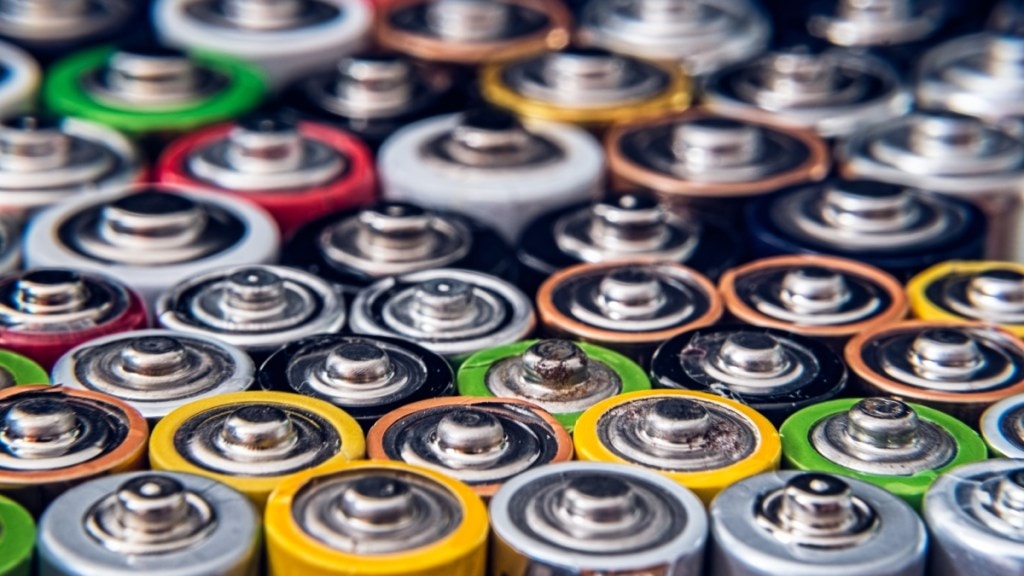By Rajat Verma
India, with its ambitious goals of transitioning to 40% renewable energy by 2030 and achieving significant EV penetration, is entering its lithium-ion battery revolution in full swing. EV sales are witnessing steady growth, propelled by supportive policies, incentives, and higher awareness of environmental issues than ever. Yet, the surge in battery demand raises alarming concerns about the disposal and environmental impact of spent batteries, as well as the ethical sourcing of energy transition materials for battery manufacturing. On the flip side, the problem of battery waste is a grand opportunity for the nation to build a supply of transition materials that can power all of its industrial decarbonisation efforts.
Lithium-ion batteries are ubiquitous with modern life that grows in its insatiable thirst for energy. These powerhouses fuel everything from our smartphones to electric vehicles (EVs) and renewable energy storage systems. By 2030, India’s lithium-ion battery market will grow to around 120 GWh, with a recycling potential of 23 GWh, according to reports featured on Mckinsey.
This increase would lead to a rise of end-of-life batteries in the ecosystem, signalling both an incoming health & environmental hazard, and an opportunity to accelerate India’s energy transition & energy security. Most battery-critical materials used to produce Li-ion batteries are largely unavailable in India, and most other countries are also heavily dependent on China for lithium as well as various other components of the battery and EV supply chain.
Lithium-ion battery recycling holds the key to a circular economy that derives maximum value and utility from existing assets, before recirculating materials over to cell manufacturing. This is possible because of the virtually infinite recyclability of transition materials, with the right technology. Battery recycling presents an opportunity to recover valuable materials like lithium, cobalt, and nickel, which are integral to both battery production and various other renewable technologies. With these materials in shortfall, and facing fluctuating prices, recycling stands as the only sustainable domestic source, curbing India’s dependence on imports and bolstering energy independence.
Helped by India’s ambitious Faster Adoption and Manufacturing of (Hybrid &) Electric Vehicles in India (FAME) series of schemes, India has been able to increase its EV proliferation significantly over the last two years. According to the latest data from the MoRTH, India has 13.34 Lakh registered EVs, and the Indian government is aiming at 30% of all road traffic to be EVs by 2030. While the country is a hotbed for innovation and production, its battery recycling capacity has yet to catch up to battery production. Various estimates indicate that the supply of energy transition materials needs to scale up by over 10 times the demand to sustain battery manufacturing and keep the ecosystem stable.
The absence of an integrated regulatory framework for battery recycling was addressed with the announcement of the Battery Waste Management Rules in August 2022, which clearly define the role of ecosystem stakeholders, the scope of partnerships, and progressive targets for recycling as well as the use of recycled raw material in the manufacture of new batteries. The legislation implements extended producer responsibility for battery OEMs, and is primed to be the bedrock of battery recycling in India.
The collective capacity of lithium-ion batteries in India is projected to reach approximately 600 GWh by 2030, according to a report by NITI Aayog and the Green Growth Equity Fund Technical Cooperation Facility. By 2030, it is anticipated that around 128 GWh of these batteries will be recycled, with nearly 59 GWh originating specifically from the EV sector. Furthermore, the batteries extracted from EVs can be repurposed into secondary usage, or ‘second life’ applications towards the end of their lifecycle before recycling. This approach could potentially lead to a cumulative reuse capacity of about 49 GWh by 2030 in the nation. Combined, battery recycling and reuse decelerate the demand for mined or imported primary materials, and builds strategic reserves of secondary materials that are destined to keep circulating in a closed-loop system.
The Road Ahead
The challenges notwithstanding, India stands at a crossroads with the potential to become the world’s supplier of materials for the clean energy transition. The government’s ‘Make in India’ initiative could be extended to ‘Recycle in India,’ promoting domestic recycling capabilities. Recently, Union Minister of State, Dr. Jitendra Singh highlighted the importance of promoting battery recycling technologies to ensure a sustainable approach in managing battery waste.
In order to bridge the gaps and confront challenges, a multi-pronged approach for establishing a resilient ecosystem is imperative to scale up battery recycling infrastructure. Foremost, aligned with the government’s commitment to indigenous research and development in battery technology, a comprehensive PLI for battery recycling is an imminent requirement. Such a framework will incentivise collection, transportation, and recycling processes, ensuring the fast, equitable, and competitive development of environmentally conscious transition materials supply.
To conclude, the case for lithium-ion recycling in India is not just a call for responsible battery waste management; it is an opportunity to build reserves of critical resources to power the future, and accelerate industrial decarbonisation efforts in time to meet net zero commitments. By investing in infrastructure, refining regulations, and raising public awareness, India can lead climate action and attract global investments in the field of sustainability, becoming the preferred global destination for closed-loop energy transition materials.
The author is the Founder & CEO of Lohum Cleantech.
Disclaimer: Views expressed are personal and do not reflect the official position or policy of Financial Express Online. Reproducing this content without permission is prohibited.



















